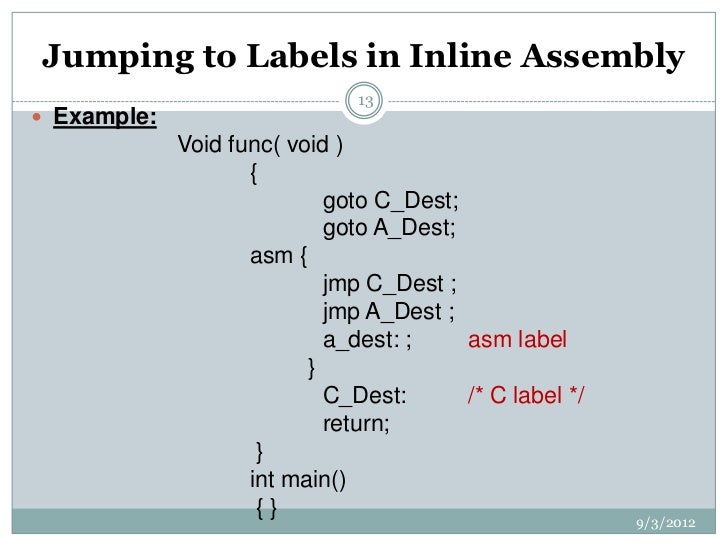- Dev C Inline Assembly Tutorial For Kids
- Dev C++ Inline Assembly Tutorial Pdf
- Dev C++ Inline Assembly Tutorial 1
How can i get inline assembly to work in dev-cpp in can get it to work in msvcpp but not in dev-cpp. Any help would. C Tutorial; 5 ways you can learn to program. Our main focus is to study the basic format and usage of (GCC) inline assembly functions. To declare inline assembly functions, we use the keyword asm. Inline assembly is important primarily because of its ability to operate and make its output visible on C variables. Because of this capability, 'asm' works as an interface between the assembly.
-->The idea behind Inline Assembly is to embed assembler instructions in your C/C code, using the asm keyword, when there's no option but to use Assembly language. First, the authors describe basic usage syntax for inline assembly (inline asm) embedded within C and C programs. Then they explain intermediate concepts, such as addressing modes, the clobbers list, and branching stanzas, as well as more advanced topics, such as memory clobbers, the volatile attribute, and locks are discussed for those who want to use inline asm in multithreaded applications.
Microsoft Specific
Assembly language serves many purposes, such as improving program speed, reducing memory needs, and controlling hardware. You can use the inline assembler to embed assembly-language instructions directly in your C and C++ source programs without extra assembly and link steps. The inline assembler is built into the compiler, so you don't need a separate assembler such as the Microsoft Macro Assembler (MASM).
Note
Programs with inline assembler code are not fully portable to other hardware platforms. If you are designing for portability, avoid using inline assembler.

Inline assembly is not supported on the ARM and x64 processors. The following topics explain how to use the Visual C/C++ inline assembler with x86 processors:
END Microsoft Specific
Dominic Servini and Scrimshire's Wah Wah 45s look back over their ever extending vaults and draw for a wide warm range of treasures. Review: Allo allo allo, what's all this then? Highlights fire off in all directions; Envee's broadsword funk mix of Honeyfeet's 'Sinner', Wojtek Mazolewski Quintet's staccato space jazz take on Max Romeo's 'Chase The Devil' and the pant swinging late night funk of Luna & Bazis' 'Fatal Attraction' are just a few dope examples. Hollie cook that very night download. From the slinky glides and sleazy funk of P.Unity's opener 'Booboo' right the way through to the final delicate charms of Maze Hill's beautiful ballad closer 'I Can Be Your Light', this collection runs the entire groove gamut the London label flexes.
Dev C Inline Assembly Tutorial For Kids
See also
Dev C++ Inline Assembly Tutorial Pdf
Compiler Intrinsics and Assembly Language
C++ Language Reference
Dev C++ Inline Assembly Tutorial 1
Documentation > Tutorials > Inline ASM Basics
|